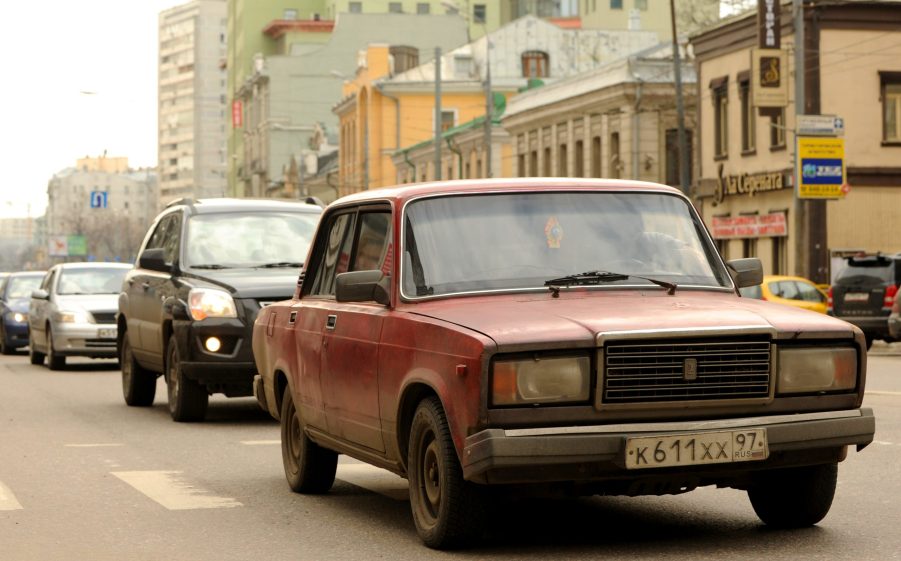
The Infamously Terrible Lada Riva Is Also One of The Best-Selling Cars of All Time
Russian-made and rarely reliable, the Lada Riva is universally agreed to be a bad car. But if it’s so back, why is it also one of the best-selling cars of all time? After all, the car was in production for 32 years and remained largely unchanged throughout. So how did this iconic jalopy capture the wallets and hearts of 18 million people?

The origin story of the Lada Riva
Originally based on the 1970 Lada Zhiguli, the restyled Lada Riva first rolled off the line in 1980. Though, before that, the Zhiguli was a rebadged Fiat 125, a platform that has been around since 1966. So from the very start, the Lada Riva was already 14 years old. But while the Lada Zhiguli was a symbol of status amongst the Soviet population, the Lada Riva was an attainable symbol of status.
Not only that, but in the 70s when the Zhiguli was in production, foreign cars weren’t on sale in Russia. And automobiles really were a symbol of wealth, because, at the time, you either had one or you didn’t The Zhigula and Riva were cars that the Soviet population could actually attain, and it became an instant hit in the country.
And in 1983, when the Riva was exported to other countries, it sold relatively well. This is mainly because the Lada had a sticker price of £3,158 in 1983, or $15,345 in today’s money. And because of that low price, the car enjoyed strong sales in Europe. Obviously, that didn’t last, but we’ll get to that later.
The point is, while it’s easy to criticize the car for its unreliable tendencies and ancient architecture (remember, the car remained largely unchanged from 1980 to 2012), but there’s a lot the Lada Riva did right at the time. Especially for the conditions of the Soviet Union
The Riva is, quite possibly, the simplest car ever made

For context, Soviet materials were not high quality, and the laborers weren’t highly skilled. So in reality, the Lada Riva is a cobbled attempt at a car. And in some ways, it was actually perfect for the population. For starters, while the car was notoriously unreliable, it was also ridiculously easy to fix. You could pluck a part from virtually any Lada Riva ever made, jam it into yours, and get it going again.
The ease of repair and general simplicity outweighed the overall unreliable nature of the car. I’d compare it to owning a dog. If you have a dog, it can’t pee or get food by itself, those are simple tasks you have to help it with. The Lada Riva may sputter and conk out, but with enough help, it’ll start running again.
But there was some engineering involved, albeit very simplistic engineering. In case you didn’t know, Russia is pretty cold. But due in part to their remarkable durability (not reliability), Lada Rivas didn’t need a lot of heat to get going. They ran in those cold conditions that many classic cars of the time wouldn’t have.
So to the Russian populous, Lada Rivas were fine cars. Yes, they were some of the only cars available in Russia toward the beginning, but they were also homegrown. But as the years went on, things started to collapse… literally.
The literal and metaphorical downfall of the Lada Riva

1991 marked the fall of the Soviet Union. Yet despite the collapse of one government and the rise of another, the Lada Riva kept on chugging, still selling well in other nations. It wasn’t until 1997 when new competitors and emissions regulations drove the Lada Riva out of foreign markets. And by then, foreign cars had seeped their way into a new Russia.
By comparison, the Lada Riva (and Russian cars in general) simply couldn’t compete with foreign automakers. But people stayed loyal to the Riva, as it was one of the last symbols of the Soviet era. An era where many thought Russia could win the cold war. And even if the Lada wasn’t a good car, it was Russia’s car, a symbol of status and independence from the rest of the world.
All of that fell away over the years. And in 2012, when the Lada Riva was pulled from production, many saw that as one of the final straws in Russia’s automotive industry. The Lada name is still selling new cars in both Russia and Europe, but again, foreign cars are repeatedly better.
18 million Lada Rivas were sold in the car’s 32-year run (46 years if you count the Fiat 125 and Lada Zhiguli). By comparison, only 15 million Ford Model T’s were ever sold. And today, many of these best-selling cars are still buzzing about. Sure, they’re bad cars, but even bad cars can tell a hell of a story.


